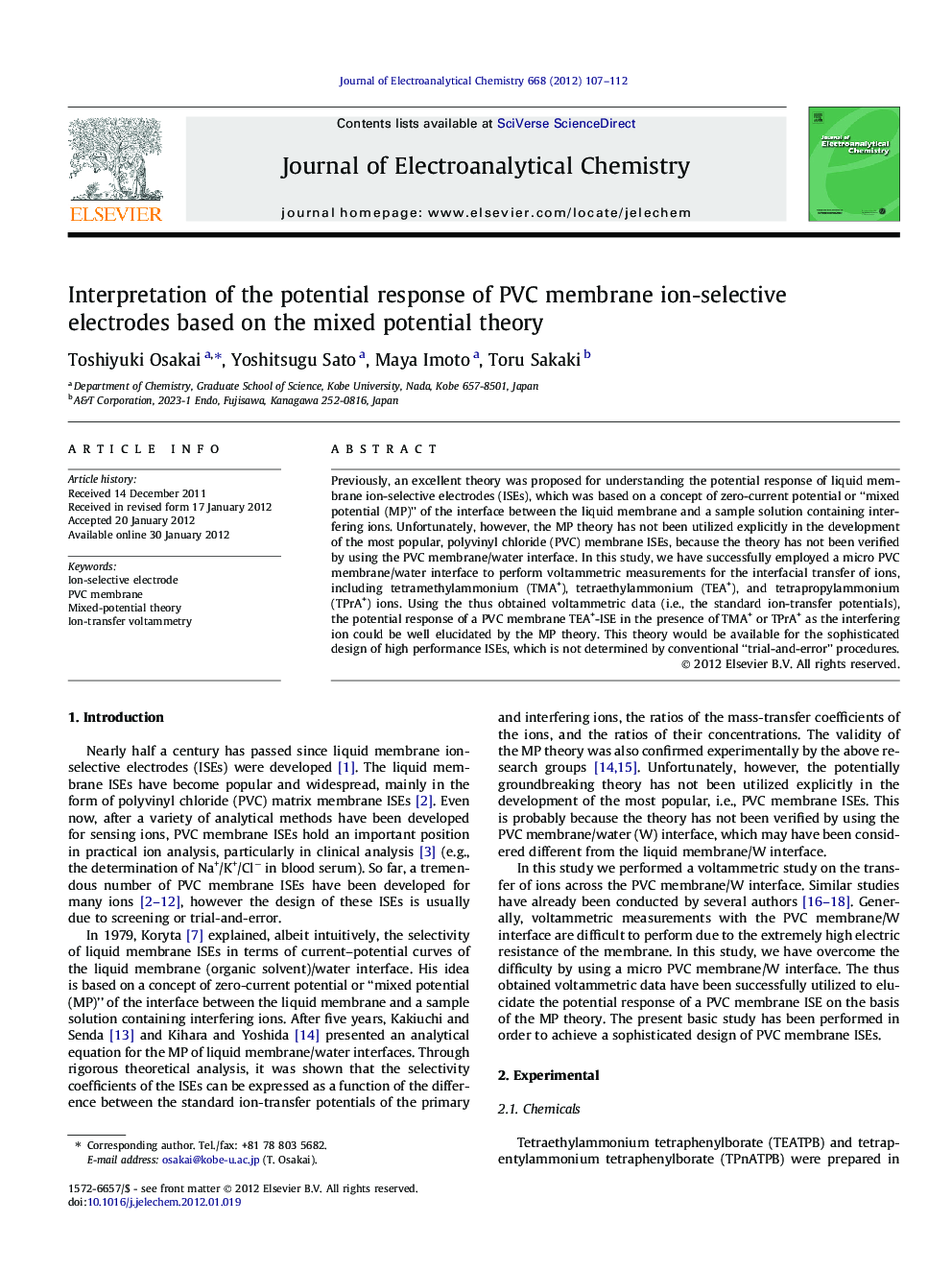| کد مقاله | کد نشریه | سال انتشار | مقاله انگلیسی | نسخه تمام متن |
|---|---|---|---|---|
| 219411 | 463273 | 2012 | 6 صفحه PDF | دانلود رایگان |

Previously, an excellent theory was proposed for understanding the potential response of liquid membrane ion-selective electrodes (ISEs), which was based on a concept of zero-current potential or “mixed potential (MP)” of the interface between the liquid membrane and a sample solution containing interfering ions. Unfortunately, however, the MP theory has not been utilized explicitly in the development of the most popular, polyvinyl chloride (PVC) membrane ISEs, because the theory has not been verified by using the PVC membrane/water interface. In this study, we have successfully employed a micro PVC membrane/water interface to perform voltammetric measurements for the interfacial transfer of ions, including tetramethylammonium (TMA+), tetraethylammonium (TEA+), and tetrapropylammonium (TPrA+) ions. Using the thus obtained voltammetric data (i.e., the standard ion-transfer potentials), the potential response of a PVC membrane TEA+-ISE in the presence of TMA+ or TPrA+ as the interfering ion could be well elucidated by the MP theory. This theory would be available for the sophisticated design of high performance ISEs, which is not determined by conventional “trial-and-error” procedures.
Figure optionsDownload as PowerPoint slideHighlights
► The mixed-potential theory has been applied to a PVC membrane TEA+-ISE.
► The transfer of TEA+ was studied at a micro PVC membrane/water interface.
► The standard ion-transfer potentials of TEA+ and interfering ions were determined.
► The selectivity coefficients of the ISE could be estimated theoretically.
Journal: Journal of Electroanalytical Chemistry - Volume 668, 1 March 2012, Pages 107–112